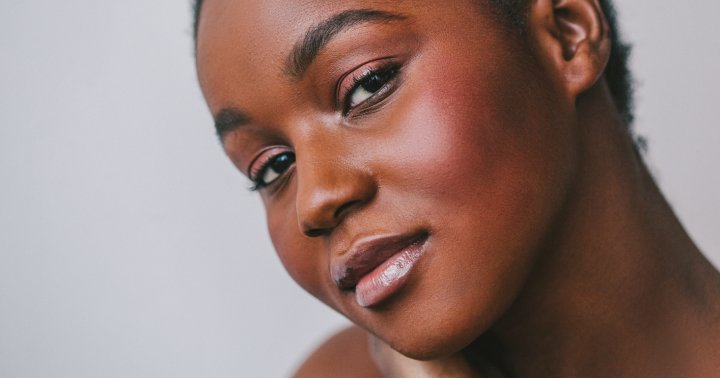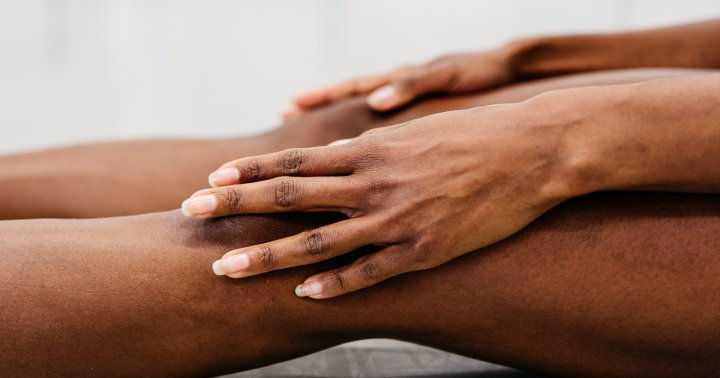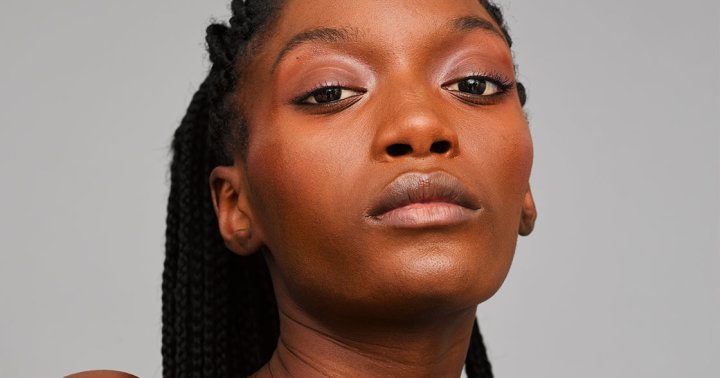Low Plank Pose for Beginners and Men | A Step-by-Step Tutorial for 2024
Low plank is a very difficult exercise, but it is also an incredibly effective way to build upper-body muscle mass and chest strength. This posture also helps prevent injury in the shoulders and upper back. As with any posture,...
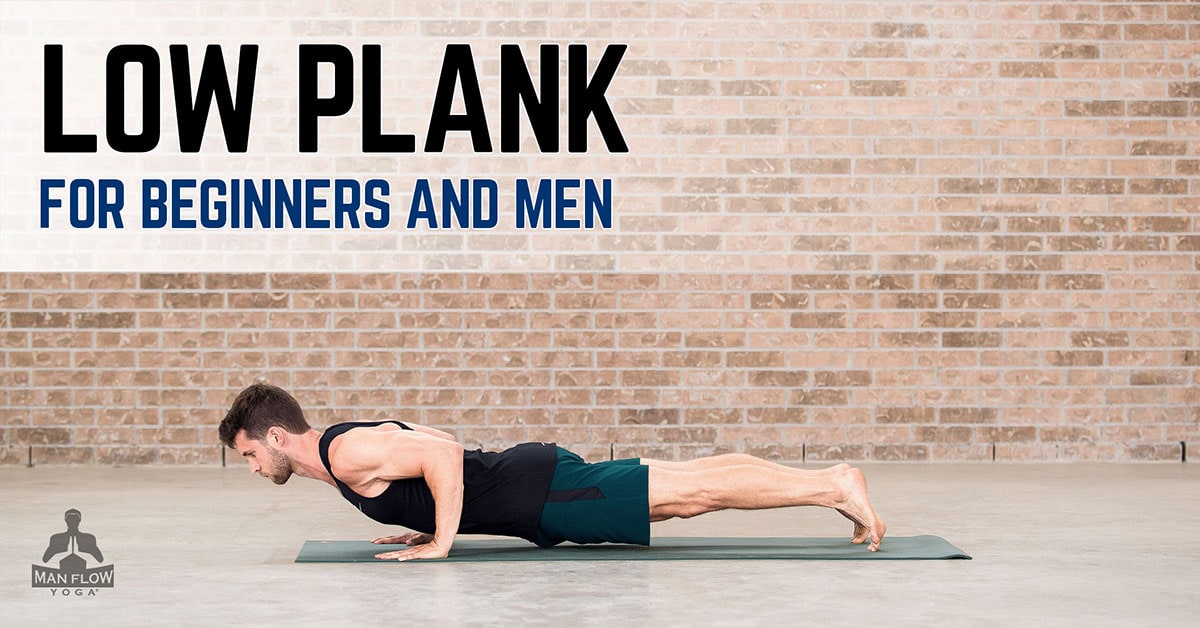
Low plank is a very difficult exercise, but it is also an incredibly effective way to build upper-body muscle mass and chest strength. This posture also helps prevent injury in the shoulders and upper back. As with any posture, it’s important to focus on proper technique for the best possible results.
Low Plank Salutation Pose Target Areas
chest shoulders upper back arms coreLow Plank Salutation Pose Benefits
Builds upper-body muscle mass, strength, and endurance Improves push-up form Strengthens wrists and forearmsHow to Do Low Plank Pose
– click images to enlarge –
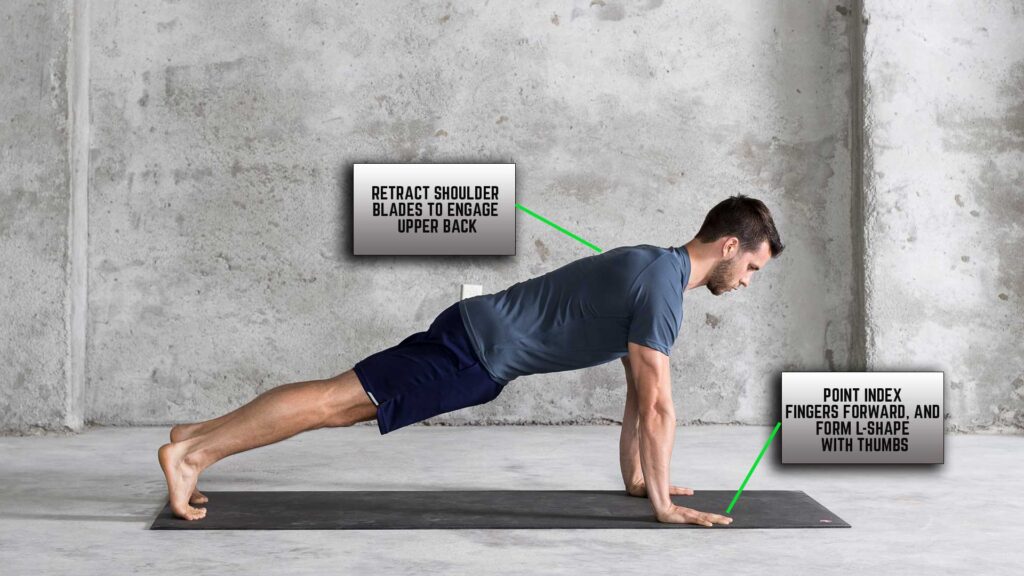 Low Plank Pose – Step 1
Low Plank Pose – Step 1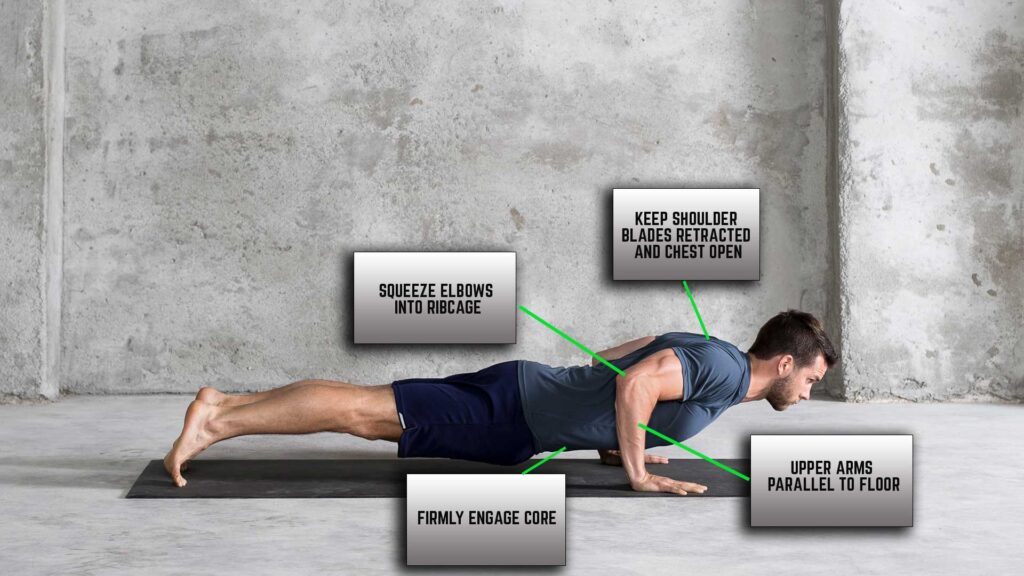 Low Plank Pose – Step 2
Start in Plank with shoulders over your hands, core engaged, toes tucked, and feet hip-width apart. Lift hips to form a straight line from shoulders to heels.
Pull your body forward with your hands, and lower your shoulders to form a 90-degree angle with your elbows. Lift shoulders away from the floor, and pull shoulder blades down. Squeeze elbows tightly into your sides. Gaze slightly forward. Hold the posture, inhaling as you maintain your position, and exhaling as you increase muscle engagement.
Low Plank Pose – Step 2
Start in Plank with shoulders over your hands, core engaged, toes tucked, and feet hip-width apart. Lift hips to form a straight line from shoulders to heels.
Pull your body forward with your hands, and lower your shoulders to form a 90-degree angle with your elbows. Lift shoulders away from the floor, and pull shoulder blades down. Squeeze elbows tightly into your sides. Gaze slightly forward. Hold the posture, inhaling as you maintain your position, and exhaling as you increase muscle engagement.
Cues for Low Plank
Retract shoulder blades to engage upper back Point index fingers forward, and form L-shape with thumbs Keep shoulder blades retracted and chest open Squeeze elbows into ribcage Firmly engage core Upper arms parallel to floorWHAT YOU SHOULD FEEL
Intense engagement of triceps, shoulders, chest, and upper back Engagement of thighs and coreWHAT YOU SHOULDN’T FEEL
Rounded shoulders or engagement of fronts of shoulders; if you do, make sure shoulders and elbows are framing torsoPRO TIP: Your shoulders should be neutral. Practice by doing Mountain pose, with your arms at your sides, palms facing forward. Notice the feeling of openness in the shoulders. This is how they should feel in Low plank, as well.
LOW PLANK POSE MODIFICATION
If you don’t yet have the strength to support yourself while maintaining proper form, lower your knees to the floor.
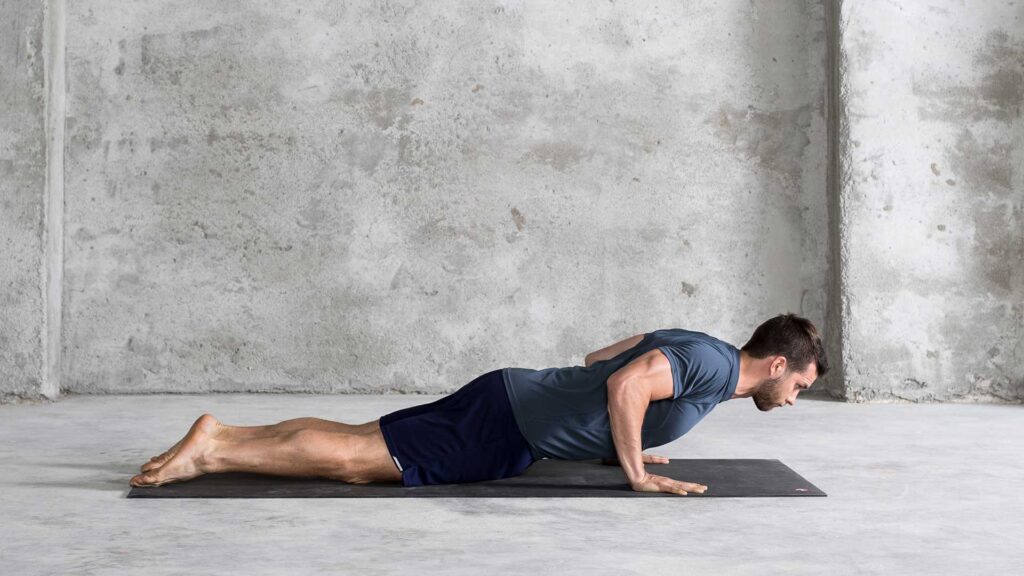 Low Plank Pose Modification
Low Plank Pose Modification
About Dean Pohlman, Founder & CEO of Man Flow Yoga, Author of Yoga Fitness for Men, Expert on Yoga Fitness for Men.
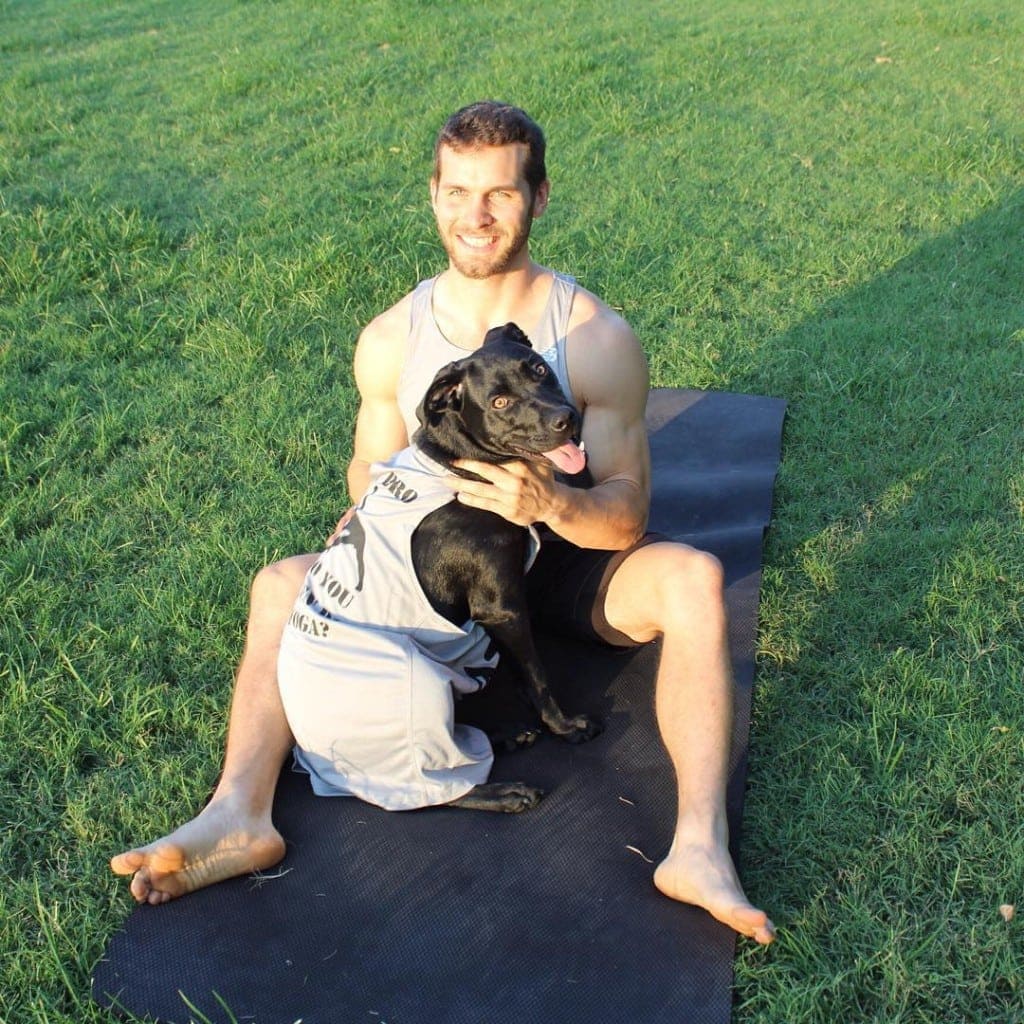
Dean Pohlman is an E-RYT 200 certified yoga instructor and the founder of Man Flow Yoga. Dean is widely considered to be an authority on Yoga for Men. He has worked with physical therapists to create yoga programs for back health and spinal recovery. His workouts and programs have been used by professional and collegiate athletes, athletic trainers, and personal trainers; and have been recommended by physical therapists, doctors, chiropractors, and other medical professionals.
Dean is a successfully published author through DK Publishing (Yoga Fitness for Men), selling 35,000 copies worldwide in English, French, and German; in addition to being a co-producer of the Body by Yoga DVD Series, which has sold over 40,000 copies on Amazon since its release in 2016.
Man Flow Yoga has been featured in Muscle & Fitness Magazine, Mens’ Health, The Chicago Sun, New York Magazine, and many more major news media outlets.
FAQs
How long should you be able to hold a low plank?
If you’re just starting to do yoga and have never tried low plank, aim for 20-30 seconds, but this could vary based on your current fitness level.
What does low plank work?
Low plank primarily targets the core muscles, but does engage other muscles like, shoulders/upper back, glutes, leg muscles and chest/arms.
What’s the difference between high plank and low plank?
The high plank and low plank are both variations of the plank exercise, but they differ in terms of positioning, the muscles they emphasize, and the level of difficulty. For example, in low plank, your elbows are bent at a 90 degree angle, whereas in high plank, your arms are fully extended.

 Tekef
Tekef 








